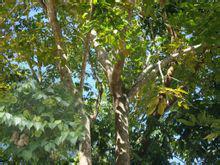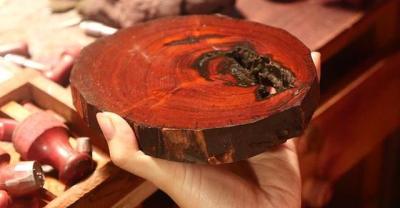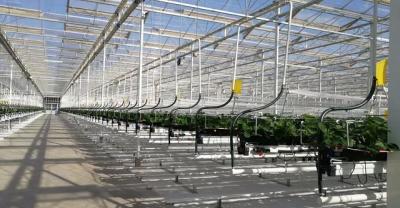Planting techniques of lobular red sandalwood
Lobular red sandalwood is characterized by high density, stable wood and not easy to deform and crack. Hardness is the first wood, rare degree can be called a national treasure, known as "wood of emperors", "gold in wood", and five years a year round more than 800 years to become wood. As the saying goes, ten sandalwood is nine empty, the largest red sandalwood is only about 20 centimeters in diameter, and its precious degree can be imagined.

Such a long growth cycle, and so precious. So how to cultivate it, let's learn about it: 1: lobular sandalwood has well-developed root system and nodules, can fix nitrogen, and is not strict with soil, but for high-yield forest, fertile land should be selected with plenty of sunshine. The afforestation is from March to May, and all localities should make corresponding adjustments according to the rainy season. The afforestation effect is good with container seedlings 30-40 cm high. If the seedlings are too high, they should be cut off and then afforested. The planting hole is 50-50-30 cm, with calcium-magnesium-phosphorus compound fertilizer as base fertilizer, about 250 grams per hole, and the plant-row spacing is 2-2 meters. 2: tending and management of young forests, strengthen forest protection, forbid grazing. Compound fertilizer was applied twice a year, each time 200 grams per plant, weeding and straightening the tree trunk before fertilization in the first three years. 3: the main pests control anthracnose and nevoid disease easily in seedling stage and young trees (the leaves turn black after discoloration). It can be controlled with 100 Bordeaux solution or 1000-fold solution of carbendazim, and trichlorfon can be used to control leaf-eating pests such as golden flower insects and beetles.

In addition, lobular sandalwood likes hot and humid climate, the annual average temperature is more than 25 degrees, the extreme minimum temperature is 2 degrees, and the annual precipitation is 1100-2200MM. The seedlings are easy to freeze when the temperature is lower than 3 degrees. It is not tolerant to shade, blossom and bear fruit 6-8 years after planting, flowering from April to May and fruiting from September to October.

You can add my WeChat account zitan768 (long press copy). I'm glad to be your friend. Friends are the wealth of a lifetime. Every day, moments share the latest styles of lobular red sandalwood, cliff cypress and sea yellow for you to make your life full of literary style.
- Prev

Planting technique of cauliflower in arch shed
1. Varieties select early-maturing varieties, Fujibai No. 2 and No. 3, Athena, late-maturing varieties: Xeni, swaddling clothes, late ripening for 90 days. two。 Environmental conditions cauliflower requires soil.
- Next

Planting method of asparagus
I still remember when I read the list of gods when I was a child, Bigan had his heart cut out and still had a breath left. Until he heard Da Ji selling asparagus, he could not help but die in the end.
Related
- Fuxing push coffee new agricultural production and marketing class: lack of small-scale processing plants
- Jujube rice field leisure farm deep ploughing Yilan for five years to create a space for organic food and play
- Nongyu Farm-A trial of organic papaya for brave women with advanced technology
- Four points for attention in the prevention and control of diseases and insect pests of edible fungi
- How to add nutrient solution to Edible Fungi
- Is there any good way to control edible fungus mites?
- Open Inoculation Technology of Edible Fungi
- Is there any clever way to use fertilizer for edible fungus in winter?
- What agents are used to kill the pathogens of edible fungi in the mushroom shed?
- Rapid drying of Edible Fungi

